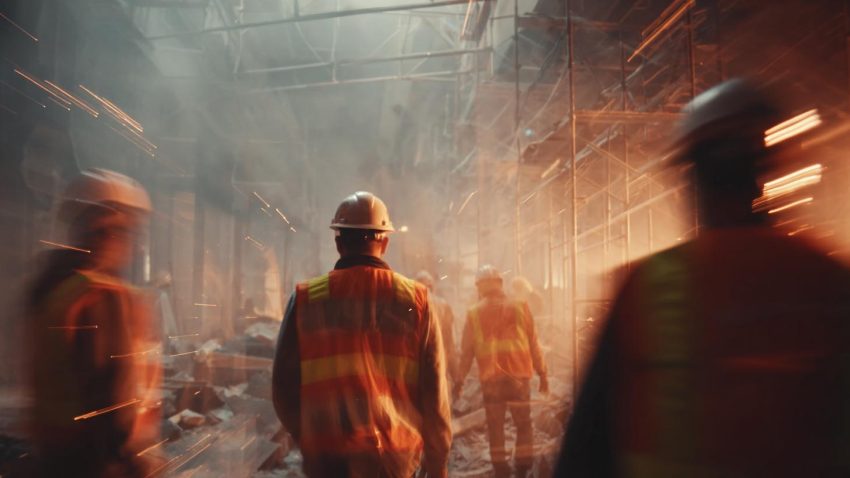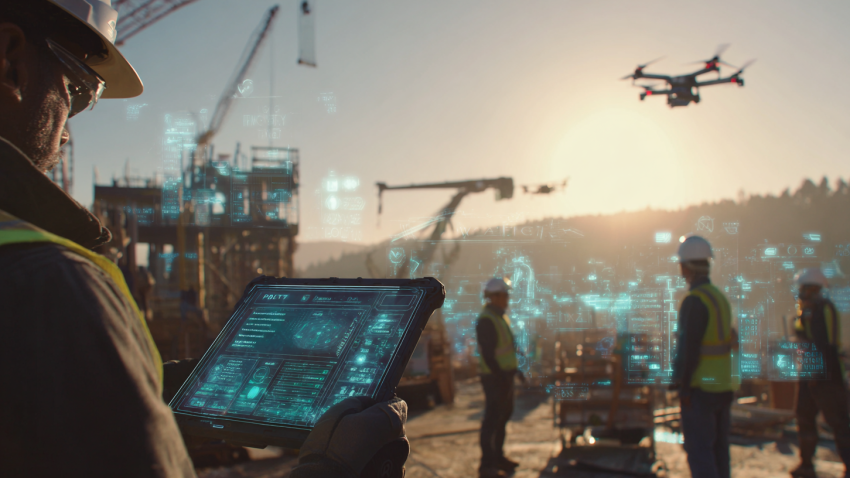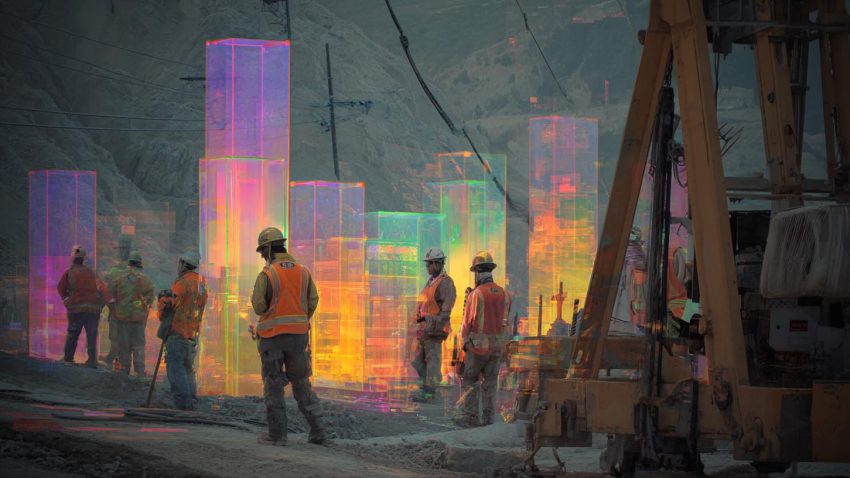Effortless Compliance and Document Control in Green Construction: Your Guide to Success!
Table of Contents:
In the dynamic landscape of green construction, ensuring compliance with regulations and maintaining meticulous document control are paramount for success. From obtaining permits to adhering to sustainability standards, every aspect of a green construction project requires careful oversight and adherence to regulatory requirements. In this article, we’ll explore the challenges associated with navigating compliance and document control in green construction efforts and provide practical insights on how to effectively manage these aspects of the project.

Understanding Compliance Requirements
Green construction projects are subject to a myriad of regulations and standards aimed at promoting environmental sustainability and safety. These regulations may include building codes, zoning ordinances, environmental regulations, and industry-specific standards such as LEED (Leadership in Energy and Environmental Design) certification. Navigating these compliance requirements can be complex, requiring project managers to stay abreast of evolving regulations and ensure full compliance throughout the project lifecycle.
Challenges in Document Control
Document control is another critical aspect of green construction projects, encompassing the creation, storage, retrieval, and management of project-related documents. These documents may include permits, blueprints, specifications, contracts, environmental assessments, and certifications. Maintaining accurate and up-to-date documentation is essential for demonstrating compliance, managing project risks, and resolving disputes effectively. However, document control poses several challenges, including version control issues, document access and security concerns, and the need for efficient retrieval and distribution of documents to relevant stakeholders.
PAS Formula: Problem, Answer, Solution
Problem: Navigating compliance requirements and managing document control in green construction projects can be daunting, leading to potential risks, delays, and compliance issues.
Answer: Leveraging technology solutions such as StruxHub can streamline compliance management and document control processes, providing a centralized platform for managing regulatory requirements and project documentation.
Solution: With StruxHub, project teams can automate compliance monitoring, track regulatory changes, and ensure that all project documents are organized, accessible, and up-to-date. The platform’s features, including customizable workflows, secure document storage, and real-time collaboration tools, empower project managers to maintain compliance and document control with ease.
10 Practical Tips for Navigating Compliance and Document Control
1. Stay Informed: Keep abreast of relevant regulations, standards, and industry best practices related to green construction. Subscribe to industry publications, attend seminars, and participate in professional development opportunities to stay informed.
2. Develop a Compliance Plan: Create a comprehensive compliance plan that outlines regulatory requirements, responsibilities, and timelines for achieving compliance milestones. Assign roles and responsibilities to team members to ensure accountability.
3. Utilize Technology Solutions: Invest in technology solutions like StruxHub to streamline compliance management and document control processes. Leverage features such as automated compliance tracking, customizable workflows, and secure document storage to enhance efficiency and accuracy.
4. Establish Document Control Protocols: Develop standardized protocols for document creation, review, approval, and distribution. Implement version control mechanisms to track document revisions and ensure that stakeholders have access to the latest versions of project documents.
5. Train Your Team: Provide training and support to project team members on compliance requirements, document control procedures, and the use of technology tools. Ensure that all team members understand their roles and responsibilities in maintaining compliance and document control.
6. Regular Audits and Reviews: Conduct regular audits and reviews of compliance documentation to identify any gaps or discrepancies. Address any issues promptly and implement corrective actions as necessary to maintain compliance.
7. Collaborate Effectively: Foster collaboration among project stakeholders, including architects, engineers, contractors, regulators, and clients, to ensure alignment on compliance requirements and document control processes. Use collaboration tools within StruxHub to facilitate communication and information sharing.
8. Monitor Changes: Stay vigilant for any changes in regulatory requirements or project scope that may impact compliance or document control. Adjust your plans and processes accordingly to address these changes and mitigate risks.
9. Document Everything: Maintain thorough documentation of compliance efforts, including permits, certifications, inspection reports, and correspondence with regulatory agencies. Keep comprehensive records to demonstrate compliance and address any potential disputes or inquiries.
10. Continuous Improvement: Continuously evaluate and refine your compliance management and document control processes based on lessons learned from previous projects. Solicit feedback from project team members and stakeholders to identify areas for improvement and implement enhancements proactively.
By proactively addressing compliance requirements and implementing robust document control processes, green construction projects can mitigate risks, enhance efficiency, and achieve their sustainability goals. With the right strategies and technology solutions in place, navigating compliance and document control in green construction efforts becomes a manageable and rewarding endeavor.
In addition to the challenges of compliance and document control, green construction projects also face unique considerations related to sustainability, resource optimization, and stakeholder engagement. These projects strive to minimize environmental impact, conserve natural resources, and create healthy and efficient built environments. However, achieving these goals requires careful planning, coordination, and execution throughout the project lifecycle.
PAS Formula: Problem, Answer, Solution
Problem: Green construction projects encounter challenges in balancing sustainability objectives with regulatory compliance, document control, and stakeholder expectations.
Answer: StruxHub offers a comprehensive solution for managing compliance, document control, and sustainability initiatives in green construction projects.
Solution: By leveraging StruxHub’s integrated platform, project teams can streamline compliance management, ensure robust document control, and track progress towards sustainability goals in a centralized and efficient manner.

StruxHub
Discover how StruxHub can revolutionize your construction management. Contact us today!
Additional Tips for Navigating Green Construction Challenges
Optimizing Resource Efficiency
Problem: Green construction projects require careful management of resources such as energy, water, and materials to minimize waste and maximize efficiency.
Answer: StruxHub provides tools for tracking resource usage, monitoring energy and water consumption, and optimizing material selection to support sustainable construction practices.
Solution: Utilize StruxHub’s resource management features to analyze resource usage patterns, identify opportunities for optimization, and implement strategies for reducing waste and conserving resources throughout the project lifecycle.
Engaging Stakeholders Effectively
Problem: Green construction projects involve multiple stakeholders with diverse interests and priorities, requiring effective communication and collaboration to ensure project success.
Answer: StruxHub facilitates stakeholder engagement by providing a centralized platform for communication, collaboration, and information sharing.
Solution: Use StruxHub’s communication tools to engage stakeholders throughout the project lifecycle, solicit feedback, address concerns, and foster a collaborative environment that supports the project’s sustainability goals.
Ensuring Regulatory Compliance
Problem: Green construction projects must comply with a wide range of regulatory requirements related to environmental protection, health and safety, and building codes.
Answer: StruxHub simplifies regulatory compliance by providing automated compliance tracking, documentation management, and reporting tools.
Solution: Leverage StruxHub’s compliance features to monitor regulatory changes, track compliance status, and generate compliance reports to demonstrate adherence to applicable regulations throughout the project.
Implementing Sustainable Design Practices
Problem: Designing sustainable buildings requires careful consideration of factors such as site selection, energy efficiency, water conservation, and indoor air quality.
Answer: StruxHub supports sustainable design practices by providing tools for modeling, analysis, and simulation to optimize building performance and minimize environmental impact.
Solution: Use StruxHub’s design tools to explore sustainable design options, evaluate their potential impact on performance and cost, and make informed decisions that prioritize environmental sustainability while meeting project objectives.
With StruxHub’s comprehensive platform and practical tips, navigating the complexities of green construction projects becomes more manageable and rewarding. By embracing sustainable practices, optimizing resource efficiency, engaging stakeholders effectively, ensuring regulatory compliance, and implementing sustainable design principles, project teams can achieve their sustainability goals while delivering successful and impactful projects that benefit both people and the planet.
StruxHub is a construction project management software that helps you manage projects from start to finish. It offers features like task management, document management, and communication tools. StruxHub can help you save time and money, improve communication, collaboration, and decision-making.
To learn more about how StruxHub can streamline your construction management processes, request a demo today. By completing our form, you’ll hear from our team soon to discuss how StruxHub can help you:
- Schedule construction material deliveries with your trades
- Coordinate construction site resources and on-site logistics
- Digitize work permits and inspection forms
- Communicate and track P6 and Excel schedules
- Broadcast announcements to all construction workers
Don’t miss out on the opportunity to optimize your construction management processes with StruxHub. Sign up for a free demo today.



